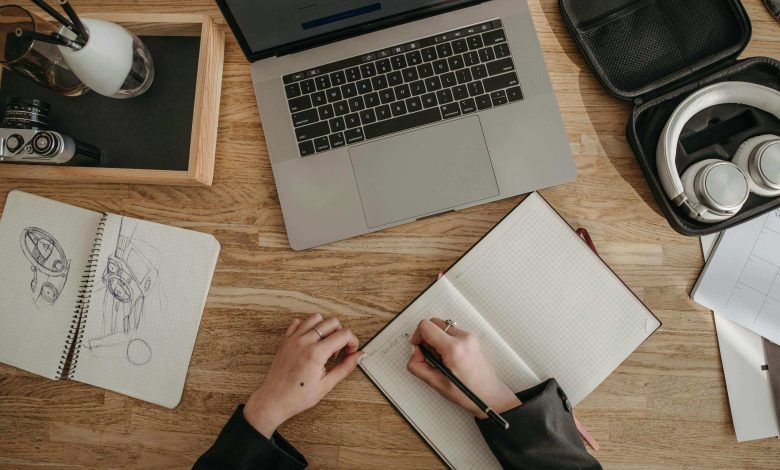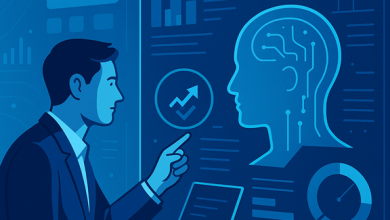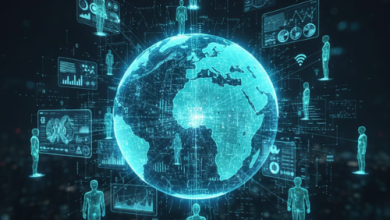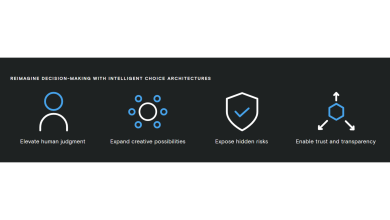
I have worked in tech for twenty years. I have seen every buzzword come and go, from “big data” to “the cloud,” and now “artificial intelligence.” So when AI started showing up everywhere, I was not surprised. What did surprise me was how personal it became.
You could not escape it. Photos on your phone started sorting themselves. Emails wrote predictive replies. Articles and ads followed you from one screen to the next. Then, at work, AI showed up in every internal announcement. It was the new solution to every challenge. “AI will streamline this,” or “AI will automate that.” The message was constant.
It was like sitting in a pot of slowly boiling water. You can ignore the heat for a while, until one day you realize you are either going to get out or learn how to swim.
Then came a layoff. That moment changes everything. You start reading job descriptions again and every one mentions AI. “Use AI to improve efficiency.” “AI-driven insights.” “Prompt engineer.” It was everywhere. I remember thinking, how long can I keep pretending this isn’t part of my world? It felt like oxygen. If I didn’t learn to breathe it, I might not survive.
Somewhere between being let go and becoming an aunt to a newborn niece named Elle, something shifted in me. New life has a way of making you rethink old patterns. I decided I could not stay afraid of a tool that was shaping the world I lived in. I was done ignoring it. That was the moment I finally made friends with AI.
I have been drowning in my own creativity since I started using AI. That is not a complaint. It is a kind of rebirth.
The Myth of Creativity
For most of my career, I never called myself creative. I lived in spreadsheets and presentations. Give me a profit and loss statement, I am good. Give me a deck to explain it, I am great. But design? Music? Art? That was for “creative people.”
Now, I have written a book, developed a podcast, drafted a television pilot, and built more projects than I have time to finish. I do not say that to impress anyone. I say it because all of that started when I began using AI.
It was not that AI made me creative. It made creativity accessible. It gave me space to explore what was already there. It helped me move ideas from my head into something I could see, test, or share.
I like to call it the “conversational corner” of AI. This is where large language models meet human curiosity. You can sit down and talk through an idea. You can brainstorm without judgment. You can be messy, uncertain, and still make progress.
For someone who lived in structure and precision, this was liberating. AI became the bridge between what I could imagine and what I could execute. It filled in gaps I did not know how to cross. It shows you paths you didn’t know existed.
A Tool for Small Business, Not Just Big Tech
Today, I work with small business owners, founders, and civic leaders. Many are women building something from the ground up with one or two employees. They are smart, capable, and running on fumes.
When I introduce AI to their work, it is not about replacing people. It is about giving them their time back.
We start with conversation. I ask them to voice note their thoughts or brainstorms. Then we use an AI tool to organize and expand on those ideas. What we often discover is not a brand-new answer, but clarity. The AI helps us see the real issue behind the issue.
One founder thought she had a marketing problem. After we unpacked her ideas with AI, we realized it was a workflow problem. Once we fixed the workflow, the marketing challenge almost solved itself.
Another client, a boutique owner, used to spend three hours a day managing inventory emails and vendor communications. Together we built an AI workflow that drafts those communications using her own tone and business values. She now reviews and personalizes them in twenty minutes. That is two and a half hours returned to her day, every day.
AI accelerates those discoveries. It helps connect dots faster. It does not think for you, it thinks with you. And for founders who are juggling payroll, clients, and creative decisions, that collaboration matters.
The 15-Minute Edge for Small Business Owners
If I were to explain it to a small business owner, I would say this. Imagine you run a bar. You know how to make a perfect drink, hire good people, and create a vibe your customers love. But payroll is not your strength. Or maybe your scheduling system is chaotic. Or maybe you are struggling to stand out because new bars are popping up with their own theme or hook.
You do not need another course or certificate. You need a faster way to learn what you do not know. That is what AI can do.
Spend fifteen minutes a day experimenting. Pick one tool, the one you have heard of the most. It could be Copilot, Gemini, or ChatGPT. Use it for one week. Ask one question: “What is the biggest problem in my business today?” Then give it context.
Maybe your issue is staff scheduling, or customer feedback, or inventory. Let the AI help you structure it. If after a week it adds no value, stop. But if it does, find one more use case.
This is not about turning your business into a robot. It is about building a smarter rhythm.
What AI Is and What It Isn’t
There are plenty of misconceptions about AI. The biggest one is that it is only for tech people. It is not. It is for anyone who wants to use it.
Another is that AI kills originality. That has not been my experience. I have never been more creative than I am now. But I want to be honest about what that means. AI is not writing for me. It is not creating my ideas. It is showing me a path I did not know existed.
For years, I thought growth meant going back to school or finding a new job. What AI taught me is that I can build what I want right now, with the tools in front of me. I can test ideas, reach people, and create work that matters without waiting for permission.
That is the real transformation. AI flips the traditional ladder on its head. It makes independence scalable.
I know AI is not perfect. It raises hard questions about data, privacy, power, and sustainability. Those are real issues we cannot ignore. But I also know that for many of us, this technology is not about novelty or trend. It is about survival and sustainability. It is about supporting our families and building something lasting.
Curiosity as Strategy
If you have been afraid or hesitant about AI, trust that instinct. Fear can be a signal. My advice is not to ignore it but to lean into it just enough to learn. Curiosity is a safer entry point than pressure.
You do not have to master AI. You do not even have to like it. Just get familiar with what it can do. Treat it like a colleague who knows a few tricks you don’t.
I spend at least ten minutes a day exploring new tools. Some I never touch again. Others become part of my workflow. The point is not perfection. The point is progress.
That is how you stay relevant in a world that will keep evolving whether you do or not.
Closing Thought
AI is not replacing creativity. It is freeing it. The moment you stop fighting it, you start finding yourself in it.
If there is one thing I hope readers take from my story, it is that you do not have to be a technologist to build something extraordinary. You just have to be willing to start the conversation.



